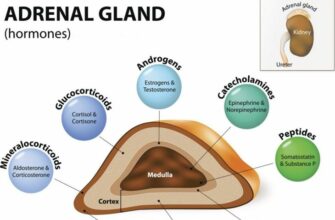Anemia in children occurs when a child does not have enough healthy red blood cells. Red blood cells contain hemoglobin, a protein that enables the movement of oxygen throughout the body. Too few healthy red blood cells means the blood cannot deliver enough oxygen to the tissues. Anemia affects about 20 percent of children in the United States.
Iron Deficient Anemia
One type of anemia common in children is iron deficient anemia, which occurs when the body does not have enough iron to make hemoglobin. Children at the highest risk for this type of anemia include those born prematurely, babies who drink cow’s milk before age one or formula not fortified with iron, those who are overweight or obese, and those who do not eat enough iron-rich foods.
Preventing Iron Deficient Anemia
If your baby is getting iron-fortified formula, they are likely getting enough iron in their diet and you don’t need to worry about this form of anemia impacting them. If you’re breastfeeding, talk to your pediatrician about giving your baby an iron supplement. For older children, ensure you feed them iron-rich foods, like beans, spinach, and chicken. Don’t give kids more than 24 ounces of milk in a day and ensure they are getting enough vitamin C, which helps the body absorb iron. Foods rich in vitamin C include strawberries and citrus fruits.
Megaloblastic Anemia
Another form of anemia in children is megaloblastic anemia. The bone marrow produces fewer red blood cells than normal, and those that are produced do not live very long. The most common cause of this type of anemia is folic acid or vitamin B-12 deficiency, but digestive diseases, malabsorption disorders, and certain medications can also cause it.
Megaloblastic Anemia Diagnosis and Treatment
To diagnose megaloblastic anemia in children, the doctor will run some blood tests, including checking the amount of hemoglobin. They may also do a bone marrow biopsy and a barium study to view the digestive system. Treatment depends on the severity of the condition as well as the child’s age and overall health. Most children with megaloblastic anemia get B-12 or folic acid supplements.
Hemolytic Anemia
Hemolytic anemia in children occurs when red blood cells are destroyed faster than the body can replace them. The extrinsic form of hemolytic anemia occurs when the body produces healthy red blood cells, but they are destroyed by an infection, medication, tumor, or autoimmune disorder. Specific causes of extrinsic hemolytic anemia include E. coli infections, hepatitis, lupus, rheumatoid arthritis, and ulcerative colitis.
Intrinsic Hemolytic Anemia
Intrinsic hemolytic anemia in children is when the red blood cells are destroyed due to a defect within the cell. These conditions are normally inherited. One cause of intrinsic hemolytic anemia is sickle cell disease, in which the hemoglobin in the red blood cells clumps together, and the red blood cells take on a crescent or sickle shape. These sickle cells are fragile and sticky, blocking normal blood flow and preventing oxygen delivery. While healthy blood cells live for about 120 days, sickle cells live only seven to 20 days. The body cannot replace them that quickly, which causes anemia.
Hemolytic Anemia Diagnosis and Treatment
Testing for hemolytic anemia in chlidren includes blood tests to measure hemoglobin and liver function and to test for the presence of certain antibodies. The pediatrician may also order a bone marrow biopsy to examine the number, size, and maturity of the red blood cells produced. Treatment depends on the age, medical history, and overall health of the child as well as the cause of the anemia. Possible treatments include blood transfusions and corticosteroids. In severe cases, the child may need immunosuppressive therapy or surgery to remove the spleen.
Aplastic Anemia
Aplastic anemia in children is a serious medical condition. This form of anemia occurs when the bone marrow does not produce enough red blood cells. There are many causes of aplastic anemia in children, including liver infection, cancer, chemotherapy, radiation, autoimmune diseases, toxins, and certain medications. Viral infections, like Epstein-Barr and HIV, can also cause aplastic anemia.
Aplastic Anemia Diagnosis and Treatment
Aplastic anemia in children is typically diagnosed by a hematologist, a doctor specializing in blood disorders. Testing typically includes extensive bloodwork and a bone marrow aspiration or biopsy. Treatment depends on the child’s general health, age, and the severity of the condition and can include blood transfusions, antibiotics, hormone therapy, immunosuppressive medicine, and stem cell transplant.
Signs of Anemia
Symptoms vary from child to child depending on what form of anemia they have, but many overlap. Some of the most common symptoms of anemia in children are increased heart rate, trouble catching the breath, tiring easily, dizziness, headaches, irritability, swollen tongue, developmental or growth delays, poor wound healing, and yellowing of the skin, eyes, or mouth. Many of these symptoms may look like other health conditions, so it is important to speak to a pediatrician and voice any concerns about anemia.

 Home
Home Health
Health Diet & Nutrition
Diet & Nutrition Living Well
Living Well More
More




















